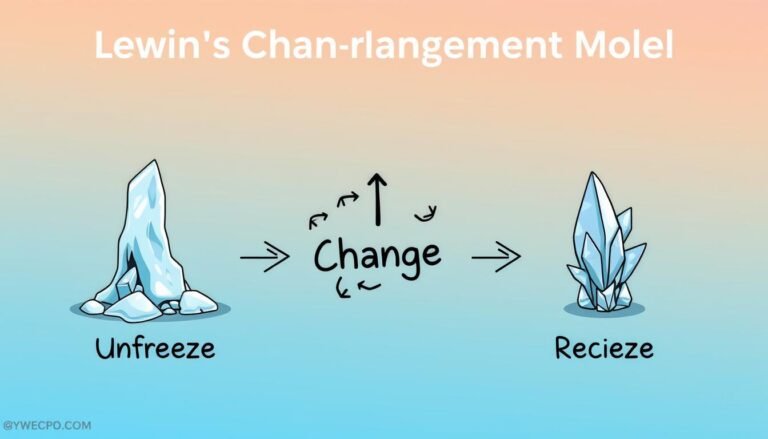Social Network Analysis in Organizations
In today’s world, knowing how organizations connect is key. Social Network Analysis (SNA) is a powerful tool for this. It helps businesses see how people talk, find key players, and work better together.
SNA looks into the heart of how companies work, showing both official and unofficial ties. It helps companies grow their social connections and share information smoothly. This is great for seeing how building relationships and making changes affect the company over time.
Business network analysis has grown a lot. It now shows how teams work together, how ideas spread, and where problems might be. With this knowledge, companies can work better together and run more efficiently.
Key Takeaways
- SNA reveals hidden relationships and communication patterns in organizations
- It helps identify influential individuals and improve cross-departmental collaboration
- Network analysis can track the impact of organizational change initiatives
- SNA optimizes information flow and enhances social capital within companies
- Understanding network structures leads to more effective leadership strategies
Understanding Organizational Network Analysis Fundamentals
Organizational network analysis is a key tool for understanding business networks and how organizations work. It’s used in many fields, from business to public health. It helps us see how complex workplace relationships work.
Definition and Core Concepts
At its heart, organizational network analysis looks at how people or groups are connected in a company. It uses nodes (people or groups) and edges (connections between them). These help us understand who is important and how information moves.
Evolution of Network Analysis in Business
Network analysis in business has grown a lot since the 1980s. New technology makes it easier to study and analyze company structures. Now, it’s crucial for seeing how informal networks affect company success.
Key Components of Organizational Networks
Organizational networks have several important parts:
- Ego networks: Look at one person or group and their direct connections
- Whole networks: Show a bigger picture of the organization
- Network density: Measures how connected the nodes are
- Centrality: Finds out who the key players are
Knowing these parts helps leaders improve how teams work together. For example, 75% to 95% of jobs are found through social networks. This shows how important network analysis is for finding and keeping talent.
Social Network Analysis in Organizations: Methods and Applications
Social network analysis (SNA) is a key tool for understanding how organizations work. It shows how information moves and relationships form. This helps businesses find hidden patterns and get better at what they do.
Organizations use both numbers and words in SNA. Numbers come from surveys or databases. Words come from interviews and groups. These help show the complex connections in any workplace.
SNA has many uses in companies. It helps improve talking, working together, and handling change. It also finds out who is most important in the company. This helps teams work better.
“Social network analysis focuses on the structure of relationships within organizations, with implications for outcomes.”
Business intelligence gets a big boost from SNA. It shows how information moves in the company. This helps companies see how strong they are and make smart choices.
- Improve communication and collaboration
- Identify key influencers
- Optimize team structures
- Enhance change management processes
As companies change, SNA will become even more important. Using these tools, companies can stay ahead in today’s fast-paced world.
Network Structure and Organizational Dynamics
Understanding network structures is key to knowing how organizations work. These networks affect how information moves, decisions are made, and power is shared.
Formal vs Informal Networks
Companies have two main network types. Formal networks follow the official hierarchy. Informal networks show how people really talk to each other. Informal chats often go around official channels, making them more powerful than the formal ones.
Centrality and Power Distribution
Power in companies doesn’t always match job titles. Social network analysis shows that who’s in the center of the network matters. People with high centrality can have more influence than their job suggests.
Network Density and Connectivity Patterns
How networks connect affects information and resource flow. Dense networks spread information fast but can lead to groupthink. Less dense networks may be slower but encourage innovation with diverse views.
Studies show 75-95% of jobs come from informal networks. This shows how crucial understanding these networks is. By studying network dynamics, companies can improve communication, teamwork, and efficiency.
| Network Type | Characteristics | Impact |
|---|---|---|
| Formal | Hierarchical, structured | Clear reporting lines, official communication |
| Informal | Fluid, relationship-based | Rapid information flow, hidden power structures |
Measuring and Analyzing Organizational Networks
Organizational network analysis (ONA) gives deep insights into how companies work and communicate. It uses data, metrics, and visual tools to show who talks to whom and how information moves.
Data Collection Techniques
There are many ways to collect network data. Surveys and interviews get direct feedback from employees. Digital tools track emails, chats, and team work. These methods paint a full picture of who works with whom.
Network Metrics and Indicators
Important network metrics show key parts of a company’s structure:
- Centrality measures identify influential individuals
- Network density shows overall connectivity
- Clique analysis reveals tight-knit groups
These tools help leaders see how information moves, who works well together, and where to get better.
Visualization Tools and Software
Network visualization software turns complex data into clear, useful information. Tools like UCINET and Gephi make it easy to see patterns, blockages, and key players in a company.
| Tool | Key Features | Best For |
|---|---|---|
| UCINET | Comprehensive analysis, matrix algebra | Advanced network analysis |
| Gephi | Real-time visualization, large-scale graphs | Interactive network exploration |
| NodeXL | Excel integration, social media analysis | Beginners, social network analysis |
By using data, metrics, and visual tools, companies can understand their inner workings. This helps them make better decisions to boost teamwork and efficiency.
Organizational Social Capital and Knowledge Flow
Organizational social capital is key for sharing knowledge and learning. A study of 159 Chinese Knowledge-Intensive Firms showed that strong relationships and shared understanding boost innovation. This shows how vital it is to build strong bonds and understanding in teams.
Knowledge sharing in companies is greatly affected by social networks. A global survey of 13,000 workers across 16 industries found something interesting. Workers who feel connected to their networks are more likely to advance in their careers. They also feel more engaged and part of the team.
Different types of networks help in sharing knowledge in their own ways:
- Intracorporate networks: Organizations under a unified corporate identity
- Strategic alliances: Partnerships between separate entities
- Industrial districts: Geographically clustered firms in related industries
Each network type offers unique chances for sharing knowledge and learning. For example, intracorporate networks help by sharing a common culture. Strategic alliances let companies exchange ideas with each other.
“Networks provide firms with access to knowledge, resources, markets, or technologies.”
To get the most out of social capital, companies should create spaces for lots of social interaction. This helps break down barriers and encourages a culture of learning and innovation.
Network Leadership and Influence Mapping
Network leadership is key to success in organizations. Leaders can achieve great things by understanding and using network structures. They do this by finding key influencers, analyzing their positions, and spotting patterns in leadership networks.
Identifying Key Influencers
Influence mapping helps find people who have a big impact in an organization. These are often the ones who connect through informal networks, not just the official ones. A 2002 report showed that looking at these networks can help find mentors and those who are overworked.
Strategic Position Analysis
Knowing where you stand in the network is crucial for leaders. They can use this knowledge to make a bigger difference. A study found that school champions, who are active in many network activities, are key to teamwork and sharing knowledge.
Leadership Network Patterns
Leadership styles shape the network and how well an organization does. A 2017 study on the construction industry’s Falls Campaign showed how important partner relationships are. By studying these patterns, leaders can improve teamwork and get better results.
- Building network capacity makes organizations more effective
- Finding hidden leaders helps use their influence
- Creating communities of practice boosts innovation and peer exchange
By following network leadership, organizations can tap into their people’s full potential. This leads to more dynamic and responsive teams.
Collaboration and Communication Networks
Modern organizations rely on collaboration and communication networks. These networks are crucial for teamwork and sharing information. By improving these networks, companies can work better and be more innovative.
Cross-departmental Interactions
Working together across departments is essential. It helps break down barriers and unite everyone. When teams from different departments work together, they become more creative and solve problems better. This mix of ideas leads to better solutions.
Information Flow Analysis
Studying how information moves in an organization is important. It shows where knowledge and resources go. By fixing these issues, companies can share information faster. This leads to quicker decisions and better performance.
Building Effective Network Structures
Creating strong network structures is key to success. It’s about linking different parts of the organization for better teamwork and innovation. By using special techniques, companies can find and connect important people. This makes the organization more flexible and quick to respond.
| Network Element | Impact on Collaboration | Optimization Strategy |
|---|---|---|
| Cross-departmental links | Increased innovation | Regular inter-department meetings |
| Information hubs | Improved knowledge sharing | Identify and support key connectors |
| Communication channels | Enhanced coordination | Implement collaborative tools |
Employee Engagement Through Network Analysis
Network analysis helps us understand how employees interact in the workplace. It shows us the hidden ways these interactions affect our work environment and productivity.
Studies have shown that being part of a strong network is key to employee engagement. A study by Carasco-Saul et al. (2015) looked at how leaders impact engagement through network analysis. They found that employees who are well-connected tend to be happier and more engaged at work.
Social Network Analysis (SNA) was developed by Rob Cross, Wayne Baker, and Andrew Parker. It gives us a visual look at how energy flows in organizations. This method helps us see who the key influencers are and how they affect team dynamics.
- Energizers: Boost morale and productivity
- De-energizers: Drain team spirit and efficiency
Group Energy Mapping lets us see these interactions clearly. It shows how they either boost or drain energy in teams. This information helps managers build better relationships and improve employee engagement.
“Five key dynamics of a Positive Energy Network create a compelling vision, encourage meaningful contributions, engage participants fully, drive ideas forward, and instill hope in people.”
By using network analysis, companies can create plans to make employees happier and keep them around longer. This method helps leaders find out who might be feeling left out, set up mentorships, and see how being part of a network affects how engaged someone is.
| Network Analysis Benefit | Impact on Employee Engagement |
|---|---|
| Identifies key influencers | Harnesses positive leadership for team motivation |
| Reveals communication patterns | Improves information flow and collaboration |
| Highlights isolated employees | Enables targeted support and integration efforts |
| Maps energy dynamics | Fosters a more positive and productive work environment |
Conclusion
Social Network Analysis (SNA) has changed how we see organizational networks. It started in sociology but now helps businesses in many ways. It gives insights into how people communicate, who leads, and how engaged employees are.
Looking ahead, SNA is getting even better. New tech like mobile devices and the internet lets us study social structures in new ways. This data helps companies understand their networks better, find key players, and work together more effectively.
SNA makes things that are hard to see clear. It helps organizations find hidden patterns and connect different groups. Tools like the PARTNER Community Partner Relationship Management platform show the bright future of network analysis and decision-making.
Source Links
- Social Network Analysis
- What is Organizational Network Analysis (ONA)? • Rob Cross
- Social Network Analysis 101: Ultimate Guide – Visible Network Labs
- 13.5 Understanding Social Networks
- Social Network Analysis
- How to Conduct an Organizational Network Analysis: Step-by-Step Guide – Visible Network Labs
- Organization Network Analysis (ONA)
- Organizational Network Analysis The Basics
- Network effects: How to rebuild social capital and improve corporate performance
- Research on the social capital, knowledge quality and product innovation performance of knowledge-intensive firms in China
- Social Capital, Networks, and Knowledge Transfer
- Social Network Mapping: A New Tool For The Leadership Toolbox
- Network Analysis for Change: Collaborations, Clusters, Champions and Coach-Weavers – Interaction Institute for Social Change
- Social network analysis (SNA) – (Networked Life) – Vocab, Definition, Explanations | Fiveable
- Work engagement in organizations: a social network analysis of the domain – Scientometrics
- Energizing Your Workforce with Social Network Analysis
- Concepts and Measurements in Social Network Analysis
- What Can Social Network Analysis Actually Tell You? – Visible Network Labs
- Social network analysis








